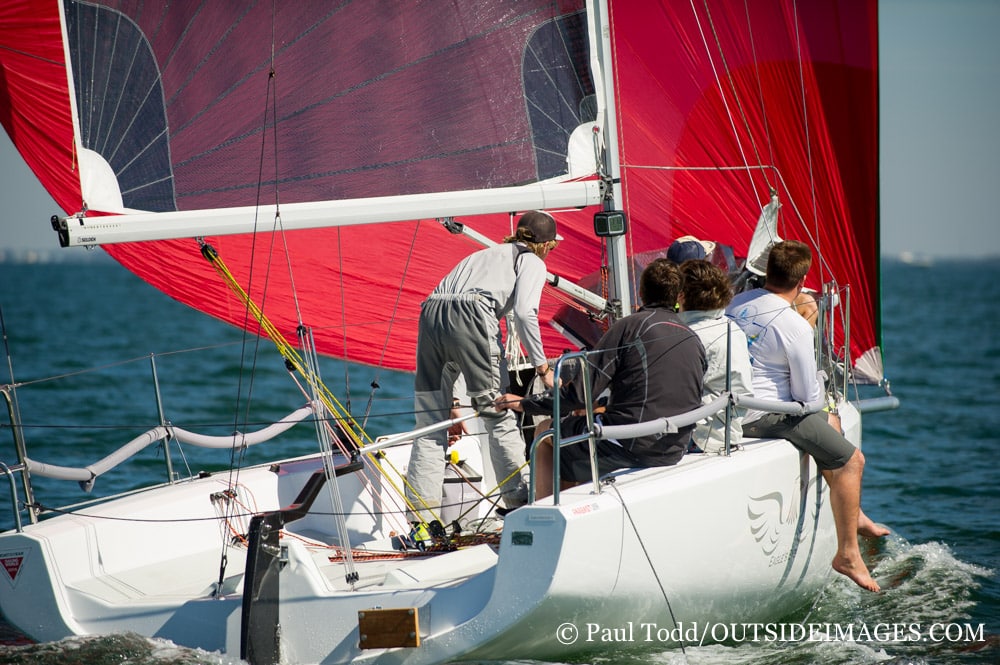
It’s time to take everything we learned getting the boat ready with our regatta prep, and taking it through a dry run on shore, and hit the water for some hands on training.
Step 3: On the water
Common sense tells us that our first race in the new boat shouldn’t be a major championship. Certainly not the Flying Dutchman pre-Olympic trials! Instead, pick an event you can approach with a light attitude. This is important, as the first experience will have a strong effect on your future attitude.
Getting up to speed in a hurry requires good onboard communication. The skipper needs constant feedback from the crew on how his experiments with trim and steering affect boatspeed.
When I’m concentrating on steering and the balance of the boat, I rely on my crew to compare our speed and pointing ability with that of boats around us. Hopefully they say, “We’re higher and faster,” but there are often times when we’re lower and slower. That’s when it’s time to experiment. While the goal is to be higher and faster, learn to be content with equal height and speed.
Objective assessment of the situation by the crew is critical, but while I appreciate a crew who is brutally honest, saying “Geez, do we have a bucket out?!,” doesn’t help. The crew should pick a boat close by – a boat that isn’t in a different wind – and then describe its relative speed and height without emotion.
Kelly Gough, a multi-class champion, has a technique that his crew uses to feed him information. He calls it, “Good news, bad news.”
His crew might say. “The boat to weather is slightly higher and nearly half again as fast.” When this happens, Kelly asks for the good news. His crew might reply with something like, “Now I don’t have to turn my head as far to see them!”
– – –
Greg Fisher has won championships in the Lightning, Flying Scot, Highlander and Thistle. However, he is best known for his dedication to helping others learn to sail their boats faster.









